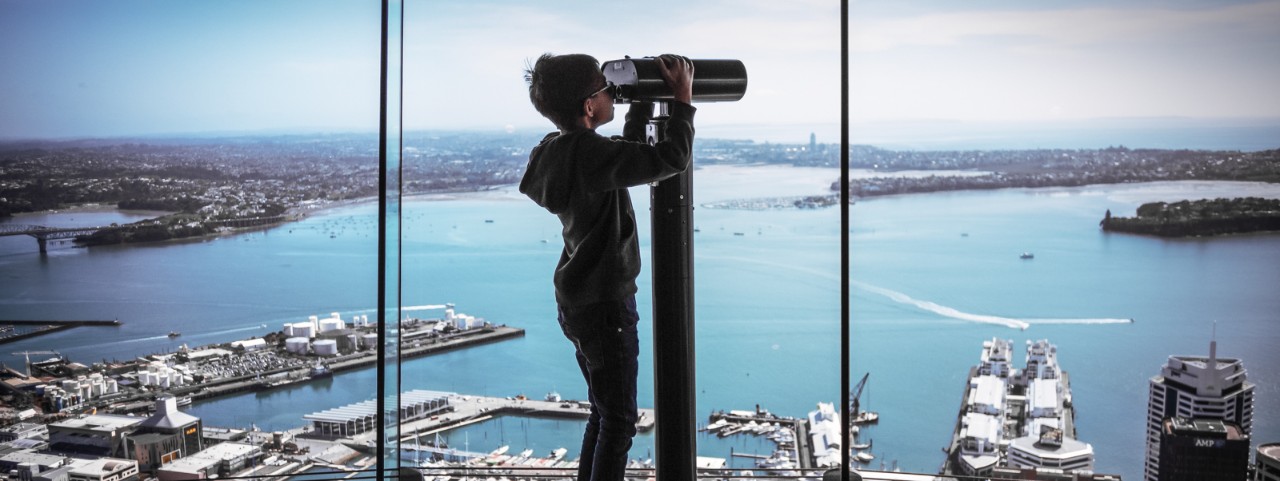Turning weakness into strength often holds the key to success. Consider the case of Auckland.
New Zealand’s largest city is vibrant, beautiful, and forward-thinking. It has developed one of the most-thorough plans of any city for the disruption that artificial intelligence (AI) is likely to unleash, and embraced technology to improve the efficiency of its electricity grid and the flow of traffic on its streets, among other things. That approach explains Auckland’s strong performance in our Global Cities AI Readiness Index, where it ranks 13th out of 105 major metropolises, ahead of Chicago, Seoul, and Beijing.
Yet as one of the world’s smallest and most-remote major cities – Hong Kong, Tokyo and Los Angeles are all more than 11 hours away by air – Auckland struggles to compete in the global technology race. It ranks just 27th out of 29 small cities in our index in terms of venture capital funding for startups and foreign direct investment, and 24th for its attractiveness to leading global corporations.
Auckland has other qualities, though, that can help it take advantage of its location during the current crisis. It scores by far the highest of any of the 105 cities in our index for government effectiveness, protecting property rights, and fostering the creation of new businesses and the take-up of new technology. Only Copenhagen, Stockholm, and Zurich come anywhere close.
That kind of effectiveness has been demonstrated at the national level during the COVID-19 pandemic. Declaring her goal to be the elimination of the coronavirus, Prime Minister Jacinda Ardern imposed strict lockdown measures that kept most New Zealanders in their homes for over a month, closed its borders to foreigners, and required returning residents to self-quarantine for 14 days.
Auckland has shown its agility as well. The city’s public transport authority imposed occupancy limits on buses and trains, and updated its mobile app so passengers can find out ahead of time whether the next vehicle will have space for them. The city also distributed mobile phones to homeless people, organized library staff to call elderly residents living alone to check on their well-being, and distributed food parcels to more than 10,000 people.
Thanks to those national and local measures, a curve that peaked at a little over 90 cases per day in early April has flattened dramatically, to less than one a day in May. After five straight days of no new cases, on May 27 the country’s director-general of Health announced that there was no longer anyone in hospital with the coronavirus. That success has enabled the authorities to begin turning the economy’s lights back on. On May 14, most businesses, restaurants, cinemas, and museums reopened at reduced capacity and under social-distancing guidelines. Schools followed suit four days later. And on May 20, the government introduced a contact-tracing mobile app intended to prevent or limit any fresh outbreaks of infection as people resume more-normal activity.
A sustained recovery still faces daunting challenges. Ardern has emphasized the need for vigilance in light of recent outbreaks of infection in South Korea and Singapore. That means a lengthy continuation of a border closing that is hammering tourism, which generates nearly 6 percent of GDP. Closed borders also pose a threat to Auckland‘s ambitions to become a bigger tech hub. The University of Auckland ranks as the world’s 13th most-international university, according to Times Higher Education, with foreigners making up nearly 20 percent of the student body.
It’s unclear when anything approaching normal immigration and travel patterns will resume, so Auckland and the country at large should look for ways to foster the digital economy and strengthen infrastructure. The city ranks 19th among its 29 small index peers for the quality and extent of its infrastructure, including IT connections that are crucial in the time of COVID-19. And to shore up its equally modest ranking for the quality of its educational and research capabilities, the authorities should continue to invest in higher education, and universities should look to establish partnerships with institutions in China and other countries.
Agriculture and horticulture no longer dominate the economy but they still generate some 40 percent of the nation’s export earnings. It’s an area where New Zealand could deploy technology to enhance its competitive strengths. The nongovernmental Artificial Intelligence Forum of New Zealand shares this sentiment, recently calling on the government, regulators, and producers to invest more in AI to do everything from modelling supply and demand trends to creating digital twins of farms and orchards to experiment with new cultivation methods and business models.
Auckland and New Zealand as a whole have made strong gains in containing COVID-19. They can build on these gains by finding more ways that play to their strengths and address their weaknesses.

